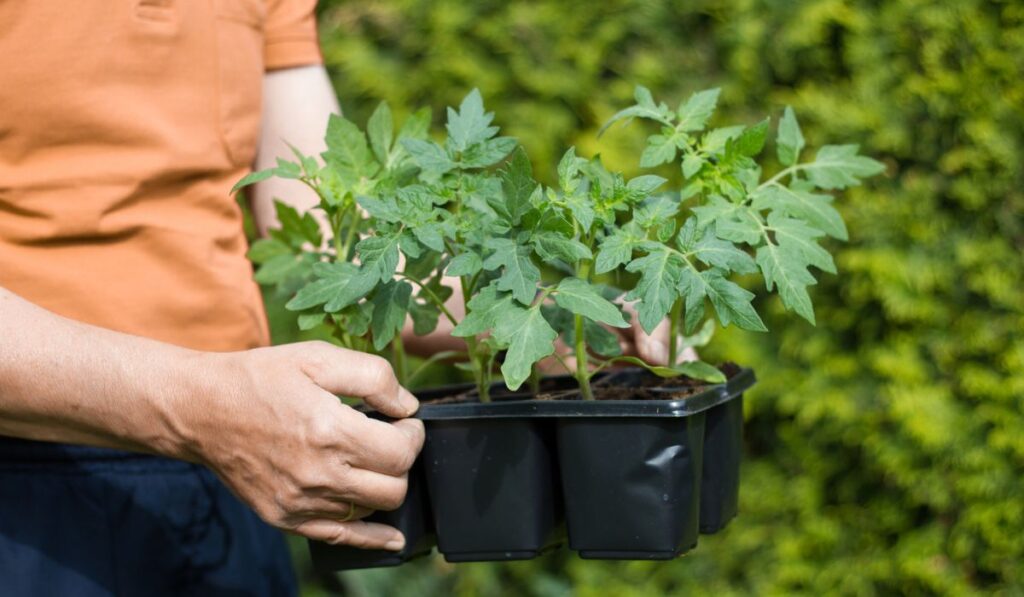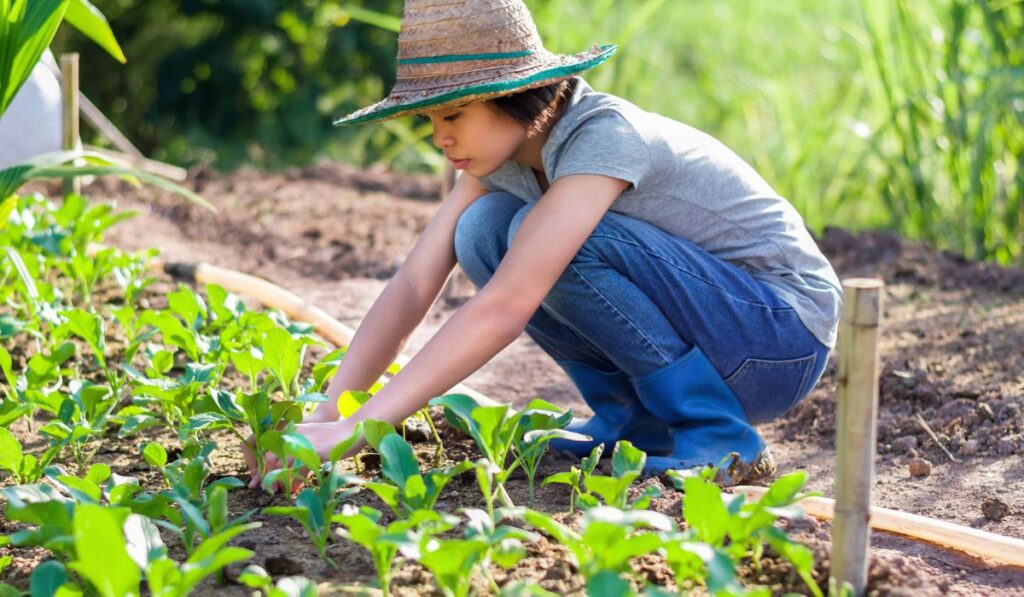Growing your vegetables isn’t just a great way to enjoy an unlimited supply of fresh organic produce but also highly rewarding and therapeutic. It also offers an opportunity to try various types of vegetables. However, planting these vegetables in the right season is essential to ensure a fruitful harvest.
March and April are the best months to start planting vegetables. Cool-season vegetables grow best in late summer, autumn, and early spring, while warm-weather vegetables grow best in early autumn or late spring and summer. The last frost date is handy in determining the best sowing time.
Whether you want to create a garden kitchen or grow a few vegetables on your window sill or balcony space, having a vegetable calendar helps you organize crop rotations and grow your favorite vegetables. Let’s find out the best time to plant the different varieties of vegetables and how you can make a vegetable calendar to enjoy fresh vegetables all year round.
When Should I Plant Vegetables?

You can plant different vegetables throughout the year from January to December. With the help of a vegetable planning calendar, you can easily set up a schedule for growing your favorite vegetables.
Be sure to consider the climate of your area, your growing zone, and the last frost date in your area when planning your yearly vegetable calendar.
- March and April are typically the best months for planting many hardy annual vegetable seeds. Once the soil begins to warm, you can plant cabbage, parsnips, peas, broccoli, chard, and carrots outdoors.
- You can plant some of these vegetables on a sunny window sill or in a greenhouse from as early as February to give them a head start and plant them outside once the weather warms up.
- Peppers, cucumbers, chili peppers, tomatoes, and aubergines are some vegetables that can be grown undercover from February.
- You can start growing half-hardy, frost-tender vegetables under cover from March and transplant them once the risk of frost has passed. These include sweetcorn, aubergine, pumpkin, and zucchini. The seedlings of these vegetables can be shifted outdoors or sown directly outside from late May and June.
- Various fast-maturing vegetables, including spring onions, radishes, and beetroot, can be sown from March until June.
- Hardy vegetables like pak choi, spinach, chard, cabbage, and spring cabbage can be planted in July and August for winter harvesting.
The growing season starts to slow when the temperatures drop from October; however, this is the best time to plant garlic. You can also continue planting winter salads or sow broad beans for an early spring crop.
Cool Season Vegetables vs. Warm Season Vegetables
Vegetables can be categorized according to two seasonal groups:
- Warm-season crops
- Cool season crops
Warm-Season Crops
Most warm-season vegetables need an air temperature of at least 75 degrees Fahrenheit and a soil temperature of 50 degrees Fahrenheit for minimum growth. These tender crops can be killed by frost and don’t perform well if the temperature goes below 50 degrees Fahrenheit.
Ensure the soil and air temperatures are above this point in early summer or spring, or your plants will not grow. It’s best to wait two weeks after your area’s last average frost date before planting your warm-season crops.
You can also encourage multiple warm-season vegetables to grow into fall by using cold frames, row covers, and other season-extending devices to protect them from frost.
Warm-season crops include okra, artichoke, sweet potatoes, peanuts, melons, squash, peppers, eggplant, cucumber, corn, tomatoes, and beans.
Cool-Season Vegetables

These vegetables grow best when the soil temperature is between 40 and 75 degrees Fahrenheit. Therefore, the seeds of the cool-season vegetables are typically planted in spring, almost a month before the last spring frost, as they germinate best in cool soil.
Cool-season plants have a shallow root system, smaller than warm-season vegetables. As a result, they can tolerate frost or short freezes. Cool-season vegetables include carrots, garlic, broccoli, parsnips, cabbage, cauliflower, kale, lettuce, radishes, and peas.
How to Create a Vegetable Calendar
Creating a vegetable calendar gives you a general idea of when to start sowing your vegetables. Here’s how you can create your own vegetable calendar:
- The first thing you need to do is find out the last spring frost date for your area. You can call your Cooperative Extension office or check with a gardening neighbor. Since the actual frost date can occur weeks or days before or after the average date, be prepared to protect your plants even after this date has passed.
- Also, mark the last average frost date on your vegetable calendar. For cool-season crops, count backward from the date, and for heat-loving crops, count forward.
- Make a list of vegetables you want to plant. Then, read the material provided on the seed packet to determine whether the crops should be started indoors or sown directly into the soil.
- It’s also crucial to find out the cold tolerance of the crops. For instance, broccoli can tolerate a light frost and cool weather, whereas tomatoes need warmth.
- Mark dates for starting indoor seeds, transplanting seedlings into the garden, and sowing seeds in the garden. For example, the following warm-season crops can be planted after the last frost date, while the following cool-season vegetables can be sowed a few weeks before the last average frost date.
Care and Harvesting Tips
- Develop a proper vegetable calendar for the vegetables you would like to grow.
- Avoid planting the seeds without checking the last average frost date, as this could cause the seeds to rot and the seedlings to become damaged by cold.
- Be sure to set the seedlings grown inside in light shade for a day or two before gradually exposing them to more sunlight. This will harden off the seedlings and get them used to outdoor conditions.
- Keep all your vegetable calendars to compare them every year. Then, adjust the planting dates based on the behavior of the seeds.
